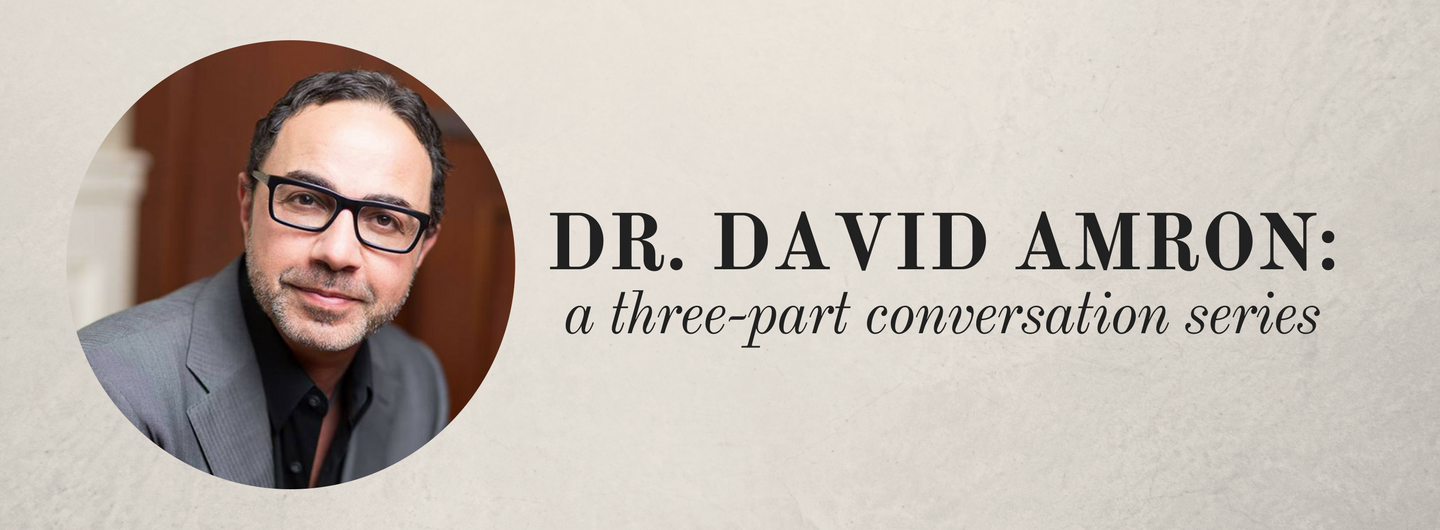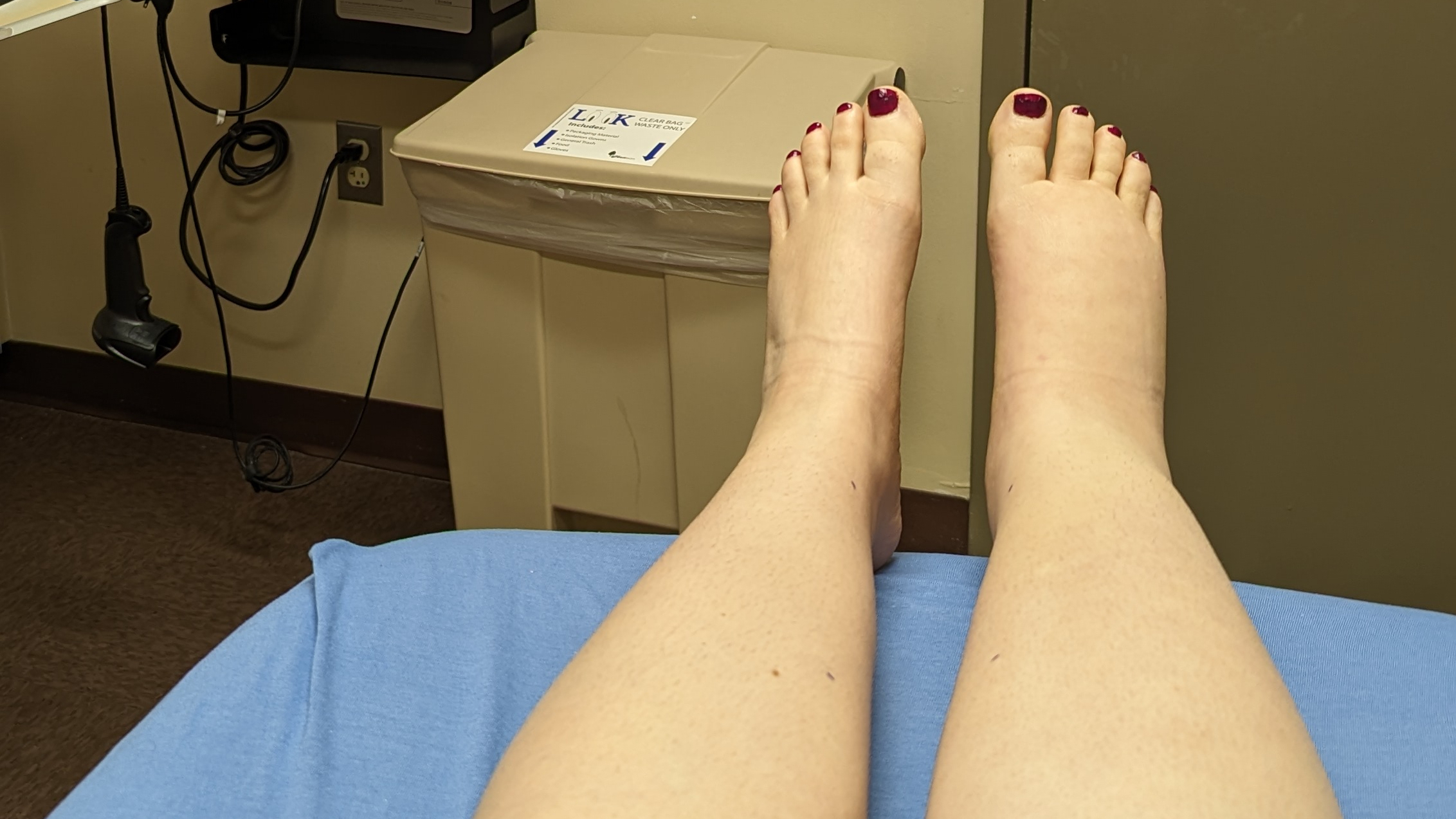In the previous post, we shifted focus to lipedema and were introduced to surgeon Dr. David Amron and his practice.
Today, we’re continuing our conversation with Dr. Amron as he explains his unique multi-system approach to advanced lipedema liposuction, as well as his collaboration with other medical professionals to provide comprehensive patient care. (If you’re squeamish, be mindful that there are some graphic images of surgery ahead!)
Interview has been edited due to length.
THE LYMPHIE LIFE: Could you explain – in layman’s terms – the surgical technique you use, and why your multi-system approach is unique?
DR. AMRON: I’ve developed my own way of doing lipedema surgery that comes from my years of experience with liposuction and these areas like the calves and ankles, and how to approach it technically. I actually didn’t hear about surgeons in Germany doing it until even just a few years ago when I had already been doing it, and I was curious about their whole approach and stuff like that. I have a lot of respect for them – I think these guys have done a lot of great work with lipedema and are very academic. Every time I hear Dr. Josef Stutz speak, I’m just – I think he’s such a great speaker and is so dedicated to it. But historically, they took the sort of American way of doing tumescent liposuction and took it back to Germany and started applying it to lipedema patients. So I did appreciate early on that the approach of doing it under tumescent local anesthesia is one that I had used for years, and also they were using it in Germany, too, with things.
But after that, things began to kind of diverge in terms of our approaches, I began to realize. So – to begin, my first approach is that I avoid general anesthesia. I don’t like general anesthesia for liposuction in general, and that’s really for three reasons: safety, an easier and faster recovery, and that it’s a technical disadvantage in terms of patient positioning. So [tumescent] local anesthesia with a patient who is conscious – whether you’re doing it under twilight, which I sometimes do – is a big advantage technically in terms of your approach to it. So that’s always my approach with patients: to not use general anesthesia.
Number two: I do use the initial preparatory step of tumescing the area, and WAL (Water-Jet Assisted Liposuction) is kind of like this. I think WAL is a great device, a great tool – I use it with every single patient. But, to me, it has limitations in terms of being enough to get the best results, not only just cosmetically but the treatment of the disease also. So I use WAL as a first step to put the fluid in. To be sure, I think it’s great to hydro-dissect the area – it’ll release a lot of fibrosis, besides the numbing.
The second step is very important: emulsification. I used to use laser a lot, and I still use laser in a lot of patients – specifically I think I have to use it more in Dercum’s or very fibrotic areas because it achieves higher peak temperatures to emulsify very fibrotic nodules. I typically use lasers in the emulsification step to release a lot of the fibrosis. But, for the past two years, VASER ultrasound has become an integral part of my surgeries to release the fibrosis, emulsify and aid in smoothing and skin tightening.
Then I use Power-Assisted Liposuction, which is just another contouring tool but I do think it’s really good for lipedema because the way it works is a vibrational device, kind of like a Sonicare toothbrush, so mechanically it’s very good in terms of releasing fibrosis. It still amazes me how fibrotic lipedema patients can be, how much scar tissue can be in there even after WAL and even after laser – there’s still some residual fibrosis that needs to be broken up, and power-assisted liposuction or VASER vibrationally releases all that.
So – I think a multi-system approach has advantages. Now, the biggest thing I do that is really different that I began to do early on because of my years of experience with liposuction is the circumferential approach. I don’t think anybody’s approaching the same way that I am doing it circumferentially around the entire 3-dimensional cosmetic unit. So, when I do the thighs – I do it from the knee up to the crotch, all the way around. When I do the calves and ankles, I also do it from the knee down to the ankle area, all the way down and around to blend the entire area as a unit. I think it’s better in terms of removing the diseased fat at one time – uniformly, completely – but also from a cosmetic standpoint, definitely. I think in lipedema we’re not only trying to get the best disease treatment possible, or treat the disease and symptoms and prevention – but also cosmetic. I think in most patients – Stage I, II, and III – the cosmetic component of it is very, very important.
The circumferential approach, I think, is really superior. I hate to use that word but I think it is, definitely cosmetically. But I don’t do it in every single patient – I do it in about 95% of patients. The very complicated Stage IV patients, for example, are very large with a lot of lymphedema along with the lipedema, and I determine that their tissues may not be able to handle a circumferential approach and I’ll do more of a strip-type approach, like they do in Germany.
So – that’s my whole approach with lipedema. I also tend to do more with each surgery, so usually I’m able to complete correction in two surgeries. Sometimes it’s only one, and sometimes it goes into a third surgery – rarely a fourth surgery. I’ll do the surgeries generally closer together than my colleagues tend to. In Stage I and Stage II patients – even some Stage III – I’ll do the surgeries a week apart. For more larger Stage III or Stage IV patients or ones with lipo-lymphedema, I extend that to between two and four weeks [between surgeries] – sometimes even six weeks in certain very complicated patients.
TLL: I know you work very closely with Dr. Karen Herbst and other specialists, which I think is something unique that a lot of other surgeons probably don’t do. How does that team approach come into play in the surgical process and aftercare with your patients?
DR. A: Karen Herbst is fantastic, she has so much amazing knowledge of lipedema and I work with her to coordinate medical care in a lot of patients. She is really more of the medical program for patients – I as the surgeon have stayed a little more distant from that part of things, in terms of all the different supplements the patient may need to go on before and after surgery.
There’s also Emily Iker, who is a lymphology doctor in Santa Monica that I work with a lot. If it’s a complicated patient – Stage III or IV lipo-lymphedema – I may send them to Dr. Iker beforehand for a diagnosis, because that helps patients have a better chance of obtaining insurance coverage. But that’s a whole other discussion – many times just seeing a surgeon directly without seeing a medical doctor first is not going to help your chances of getting covered by insurance. So, many times I’ll refer to Emily Iker for her diagnosis, but she’ll also do ultrasounds on certain patients to understand the degree of fibrosis and then a lot of times she’ll do pre-compression therapy on the patient prior to surgery if they’re a more complicated, very fibrotic patient.
Other specialists – I have a group of lymphatic MLD therapists in the Los Angeles area that I work very closely with. There’s about four or five that I trust who are really good in terms of their skills and judgment to do all the MLD therapy – sometimes before, but then after on the patient. I haven’t yet brought that in-house into The Roxbury Institute – I may at some point.
And then we’re also expanding in terms of nutritional consultation. I have a naturopathic doctor, Dr. Sara Whitney, and we’re going to expand the scope of care to include nutritional consultation for patients. What I do currently is give them the book written by Karen Herbst and Emily Iker but we’re going to get more involved in really counseling patients from a nutritional standpoint, because I think it’s important for every patient to optimize nutrition.
I know that before surgery, patients become very frustrated with diets, but once you’ve done the surgery and you’ve debulked all that fat – what I find in patients is their body tends to respond better, it almost like metabolically resets them in a way, and that’s where the importance of diet becomes even more imperative. And then you start thinking in terms of prevention, because we don’t know for sure whether liposuction is going to completely eradicate lipedema in every single patient ten, fifteen years down the line. I think diet is important in terms of preventing it from coming back. I do think there’s a very small subset of patients that have very aggressive lipedema that can come back after liposuction, and I think in those people diet is imperative, as well as ongoing compression therapy. I think that, in a lot of patients, they still need to wear compression after surgery – at least sometimes. Even after lipo, some have to wear compression long term.
TLL: That’s something I see a lot in the lymphedema community: people regard surgeries as a “cure” for the condition when really it helps gets you to a point where you can better manage it. You still generally need to use the compression, and you need diet and exercise to help really maintain that.
DR. A: I think it’s the same with lipedema, too. I think well-done liposuction is a very powerful component, but again – the other parts of it are so very important, too.
TLL: Yeah – treatment is very patient-driven. You have to kind of take accountability for your care, and I know that’s hard for a lot of patients to do sometimes.
DR. A: You do, you do – but you know, the thing is that what I see in these patients that come in, they’ve been just so blamed by people who don’t understand the disease. They’re so blamed by people – they’re “not doing enough.” So it’s kind of a delicate balance: you want to encourage patients to look at their part of things, but then there’s only so much they can do.
https://www.instagram.com/p/BQjTdWogsrA/?taken-by=lipedemasociety
Check back tomorrow for the conclusion of this conversation series, where Dr. Amron discusses his consultation process and what patients can expect before and after surgery!
To learn more about Dr. Amron or schedule a consultation, please visit amronmd.com. You can also connect with Dr. Amron on Instagram, Facebook, Twitter, Google+, and YouTube, and follow the Lipedema Society on Facebook and Instagram.




Leave a Reply